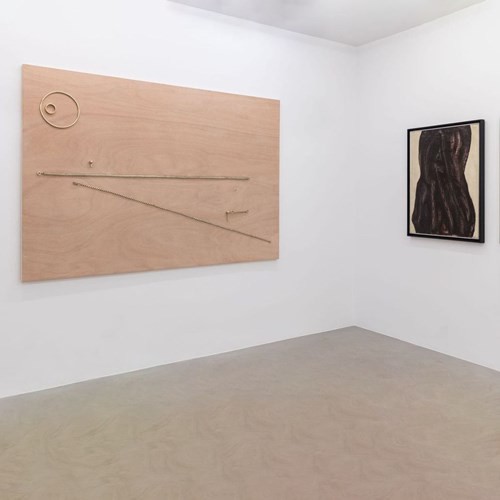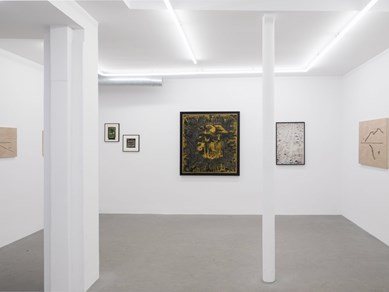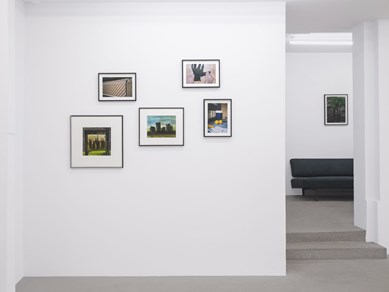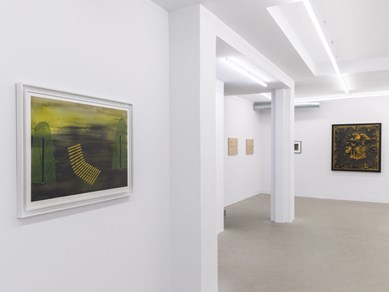Paris,
No. 239 | Rue Saint-Martin | 75003 Paris | France
24 November 2022 - 28 January 2023
Behjat Sadr (1924 - 2009) arrived in Paris in 1980, right after the Islamic revolution in Iran, which marked the end of Western influence in the country. Known as the first abstract painter in Iran, movement is at the heart of her practice, like the colorful gestures she created during her time in Italy in the 1950s or rhythmic repetitions of black paint in the 1970s.
Sadr has shaped her art by rejecting pictorial practices from Iranian cultural tradition while being nourished by the environment surrounding her since childhood. The architecture of the vaults of the Great Mosque of Esfahan has inspired a series of geometric works; the national oil rigs haunt several paintings questioning Iran's ambivalent relationship with the revenues generated by this industry. The Iran-Iraq war and illness persuaded her to stay in France. In Paris, she creates collages and photo-paintings inspired by the past and present, depicting solitary beings wandering in unusual spaces, often caught in a vise of black trunks, suggesting an agony "specific to our times, marking all places", as quoted in her writings. Behjat Sadr died in 2009, in France.
Isabelle Cornaro (born in 1974) grew up in the Central African Republic and arrived in Paris in 1980, following the fall of Emperor Jean-Bédel Bokassa backed by the French government because of his conciliation with Muammar Gaddafi. This new political strategy was seen as against France's own interests because before the change, France had benefited from the exploitation of the country's mineral resources, including gold and diamonds.
The Savane autour de Bangui series (a facsimile) (2022), evokes the issue of colonialism from a personal point of view. This body of work is a series of compositions made with bronze copies of jewelry that belonged to the artist's mother. Arranged to create simplified landscapes reminiscent of childhood play and imagination, these arrangements of chains, watches, and pendants bring the objects back to different statuses depending on their place in each composition. The change of scale emphasizes the psychological and fantastical nature of our relationship to spaces, childhood, history, and what is real or imagined, true or false. The exhibition brings together two artists of different generations, linked by the influence of historical events on their artistic practice.



